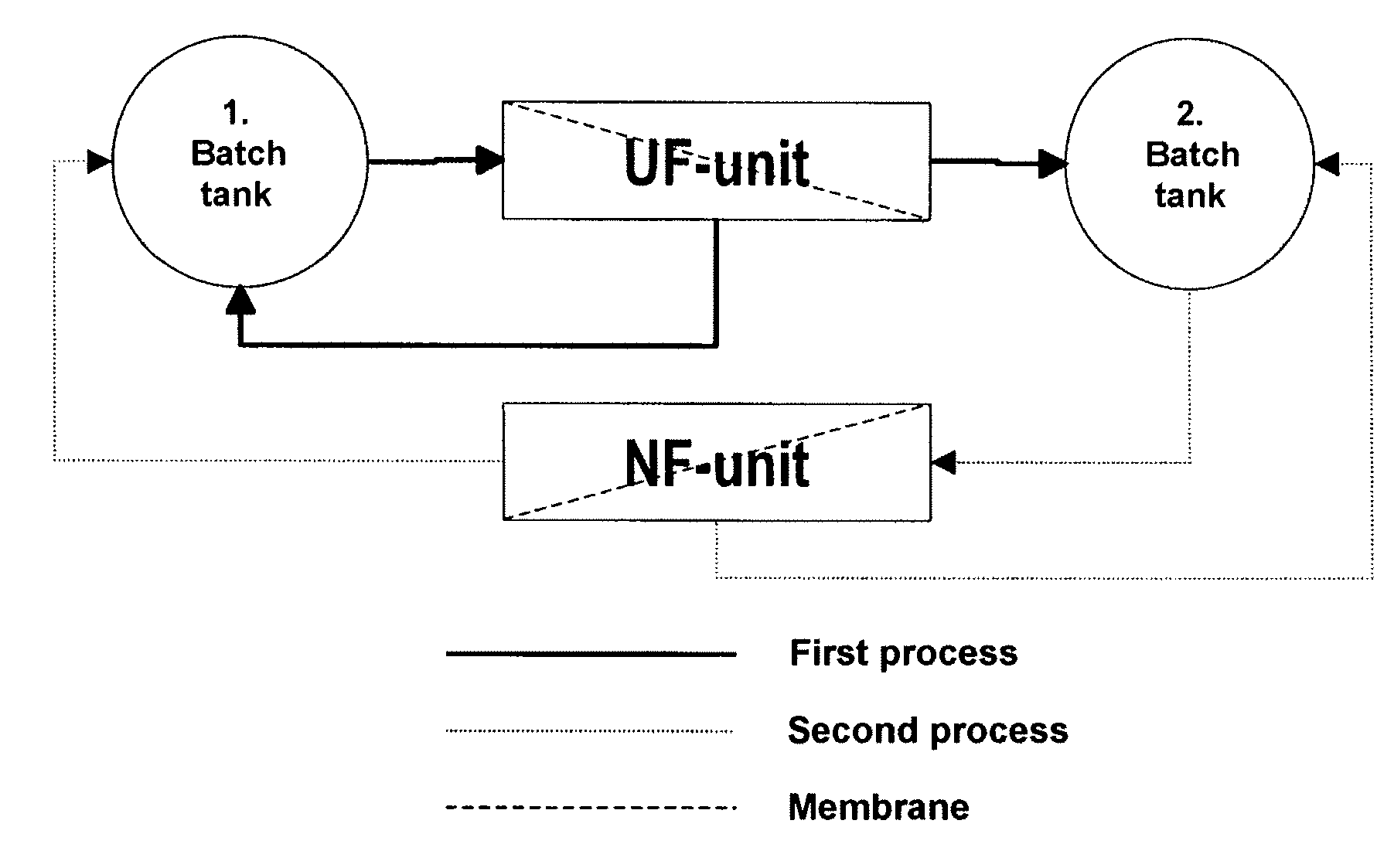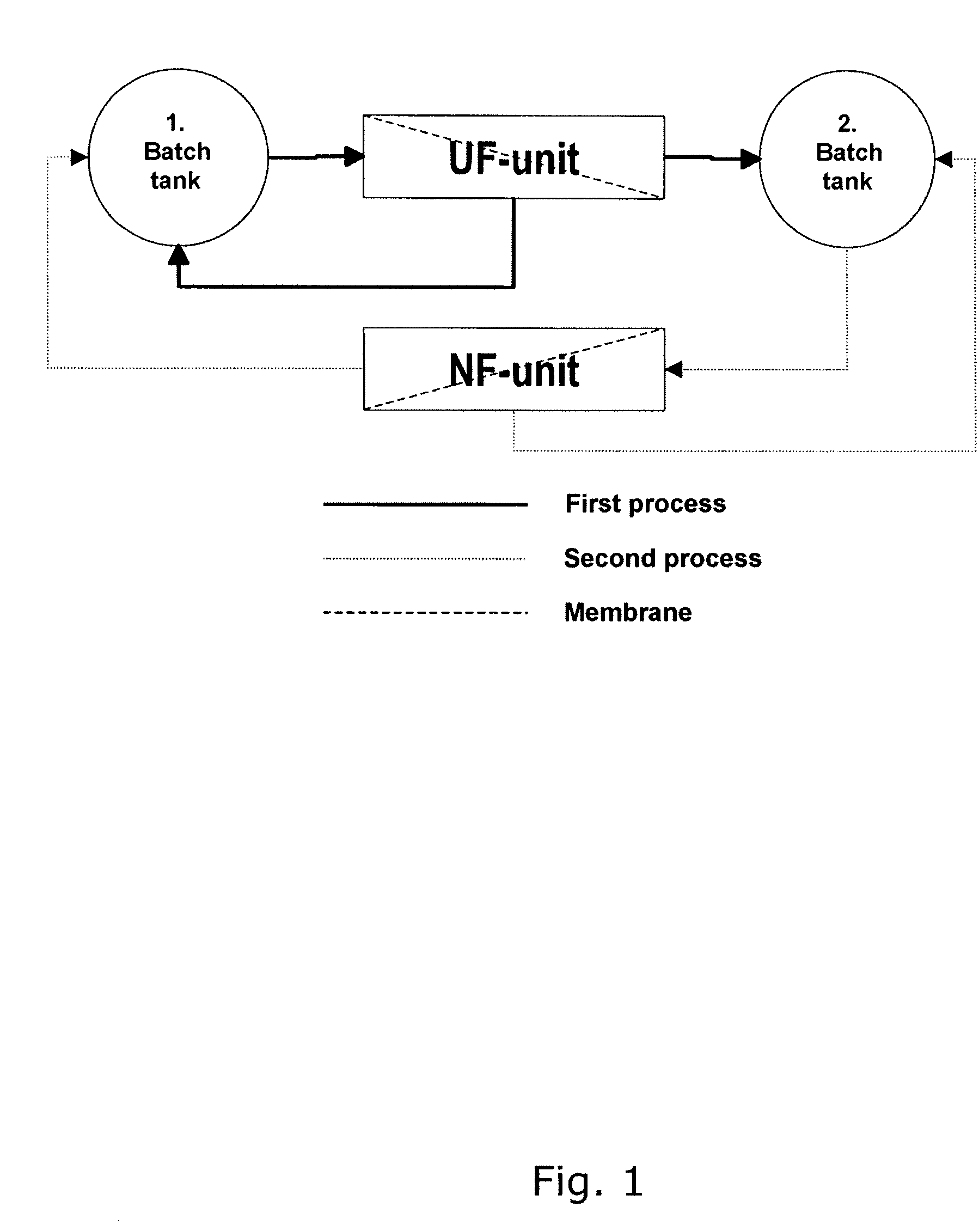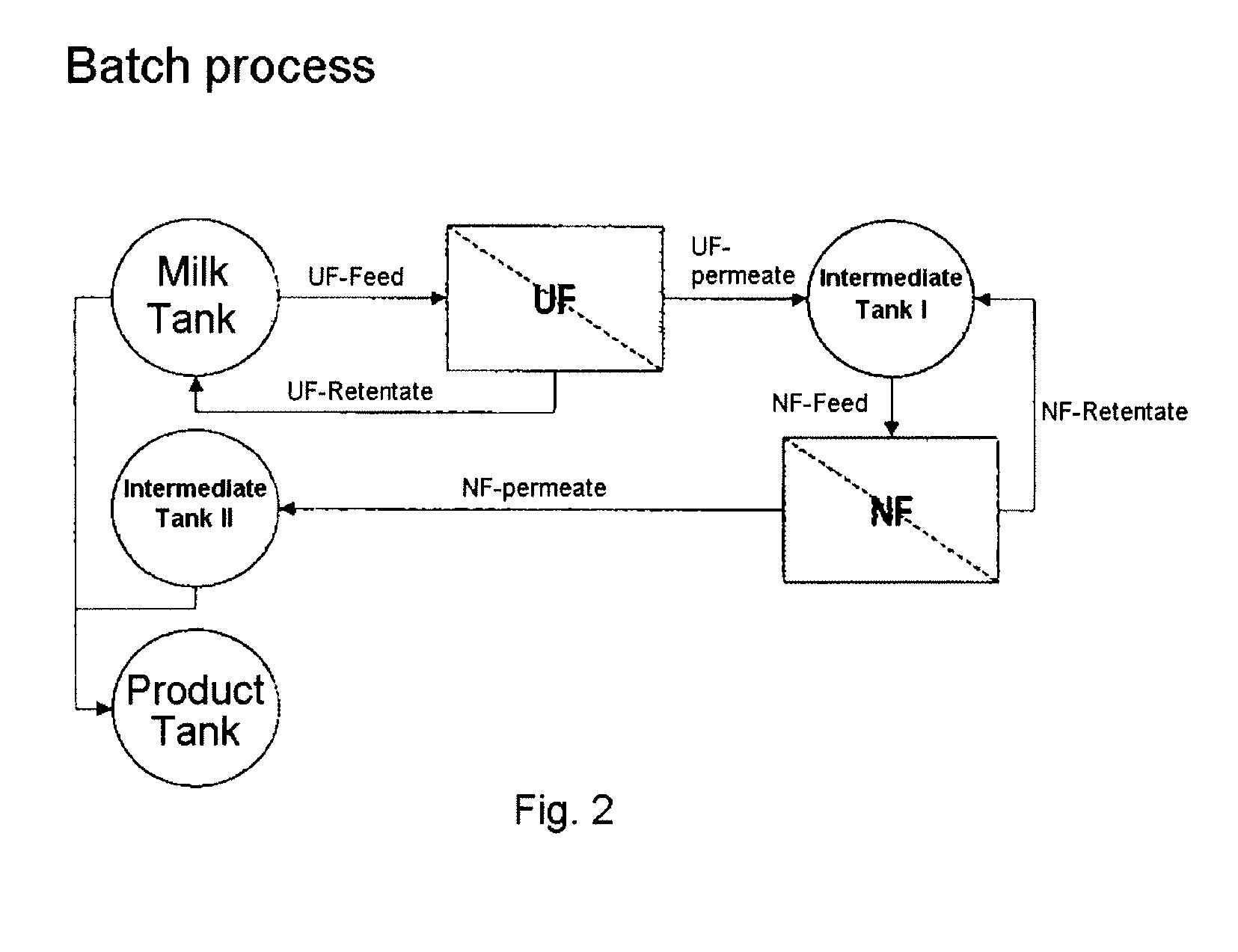Process for producing lactose-free milk
a technology of lactose-free milk and process, which is applied in the field of process for producing lactose-free or substantially lactose-free milk, can solve the problems of limited loss of original milk, and achieve the effects of less expensive, high reliability, and similar sweetness, taste and/or organoleptic properties
- Summary
- Abstract
- Description
- Claims
- Application Information
AI Technical Summary
Benefits of technology
Problems solved by technology
Method used
Image
Examples
example 1
[0098]32 000 litres of semi-skimmed milk was feed to a first batch tank.[0099]The semi-skimmed milk was ultrafiltrated to a concentration factor (CF) of 2.0 on a UF-unit, equipped with spiral elements (Desal; cut-off: 10 000 MW). The result was 16 000 liters of UF-retentate and 16 000 liters of UF-permeate.[0100]The UF-permeate was processed, over a second batch tank, on a nanofiltration (NF) unit, equipped with spiral elements (Desal; cut-off: 200 MW). The CF is 5.0, resulting in 3 200 liters of NF-retentate and 12 800 liters of NF-permeate.[0101]The 12 800 liters of NF-permeate were mixed with the 16 000 liters of UF-retentate in the first batch tank. The mix ratio of UFR:NFP is 1:0.8, resulting in 28 800 liters of lactose reduced semi-skimmed milk.[0102]After reducing the lactose by filtration the lactose reduced semi-skimmed milk get a UHT at 143 C.° in 4 seconds and Lactase (Maxilact 2000 LG) is added in ad dosage of 0.01%.[0103]After hydrolyzing the product the lactose concent...
example 2
Comparison Analysis
[0110]A number of products from the producer Valio were purchased in order to compare known products and products obtainable with the present process. The results are depicted in Table 1.
TABLE 1ValioPresent inventionMeanStd. Dev.CVMeanStd. Dev.CVAsh0.7900.02163%0.7160.02463%Ca0.1040.00071%0.1180.00413%Cl0.1050.010010%0.0890.00324%Lactose2.950.09383%2.800.11294%Fat1.500.03102%1.500.06414%K0.1250.014211%0.1290.00212%Mg0.0110.001211%0.0100.00033%Na0.0660.016625%0.0340.00113%pH6.840.01830%6.760.00420%P0.0930.00556%0.0970.00364%Protein3.40.02711%3.70.10843%Carbohydrate3.02.8
[0111]Unless otherwise noted, the values of Table 1 are in g / 100 ml, except for pH and CV.[0112]Std. Dev. is the standard deviation.[0113]CV, the coefficient of variation, is defined as the standard deviation divided by the mean.
[0114]The analysis further showed that there may be large differences between declared and actual values of the parameters. Valio has declared calcium contents of 120 mg / 100...
PUM
 Login to View More
Login to View More Abstract
Description
Claims
Application Information
 Login to View More
Login to View More - Generate Ideas
- Intellectual Property
- Life Sciences
- Materials
- Tech Scout
- Unparalleled Data Quality
- Higher Quality Content
- 60% Fewer Hallucinations
Browse by: Latest US Patents, China's latest patents, Technical Efficacy Thesaurus, Application Domain, Technology Topic, Popular Technical Reports.
© 2025 PatSnap. All rights reserved.Legal|Privacy policy|Modern Slavery Act Transparency Statement|Sitemap|About US| Contact US: help@patsnap.com



